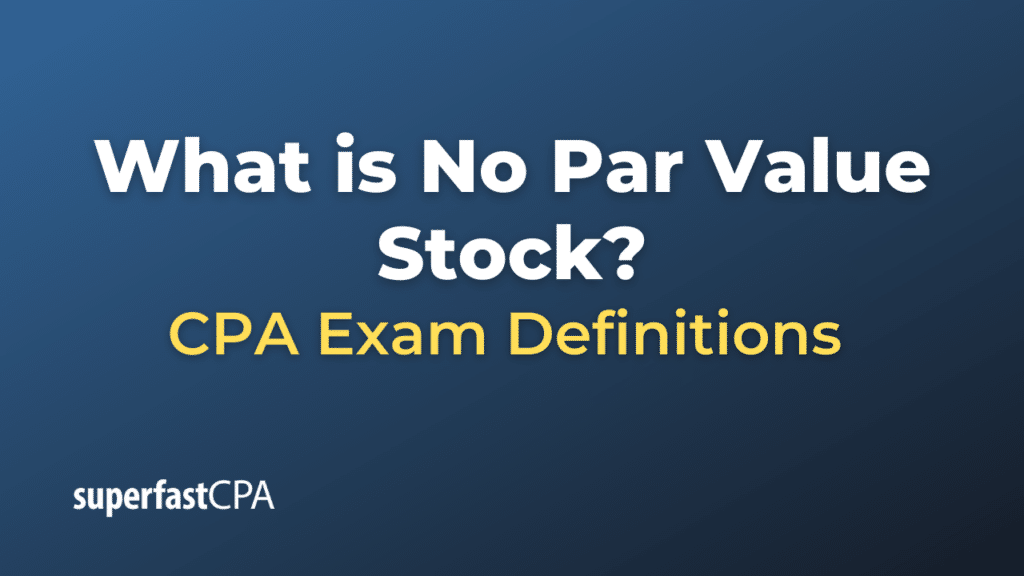No Par Value Stock
No par value stock is stock that has been issued without a “par value” or face value. The par value of a stock is a nominal value that is typically set at a very low amount and does not relate to the actual market value of the stock.
No par value stock doesn’t have a par value assigned to it by the issuing corporation. This means that the shares can be sold at any price, and the entire amount received by the corporation when the shares are issued will be recorded as paid-in capital.
Companies might choose to issue no par value stock for a couple of reasons:
- Flexibility: By issuing no par value stock, a company isn’t setting any expectations about the stock’s value. The company can issue shares at any price without worrying about legal issues that might arise if shares were issued below par.
- Avoidance of Liability: In some jurisdictions, companies might be legally liable to shareholders if shares are issued below par value. Issuing no par value stock sidesteps this potential issue.
However, some states or jurisdictions impose additional taxes or fees on no par value stock, which can be a disadvantage for companies considering issuing such stock.
It’s important to note that the concept of par value has become largely symbolic and does not necessarily reflect the true value of a share of stock. The market value of a share, determined by supply and demand in the market, is usually of far greater importance to investors.
Example of No Par Value Stock
Suppose that a corporation, called XYZ Corp, decides to issue 1,000 shares of no par value stock. The corporation is not setting a specific par or face value for the stock, and can therefore sell the shares at any price they determine based on factors such as what they believe investors will be willing to pay, how much they need to raise, etc.
They decide to sell each share for $50. So, when the shares are issued, XYZ Corp will receive $50,000 in total (1,000 shares * $50 per share).
When XYZ Corp records this transaction in their accounting books, the entire $50,000 will be recorded as paid-in capital, because there’s no par value to record separately. This could be different if the shares had a par value; for example, if each share had a par value of $1, then XYZ Corp would record $1,000 as common stock (1,000 shares * $1 par value) and the remaining $49,000 as additional paid-in capital.
So, in this example, the no par value stock allows XYZ Corp to simply record the entire proceeds from the share issue as paid-in capital.













